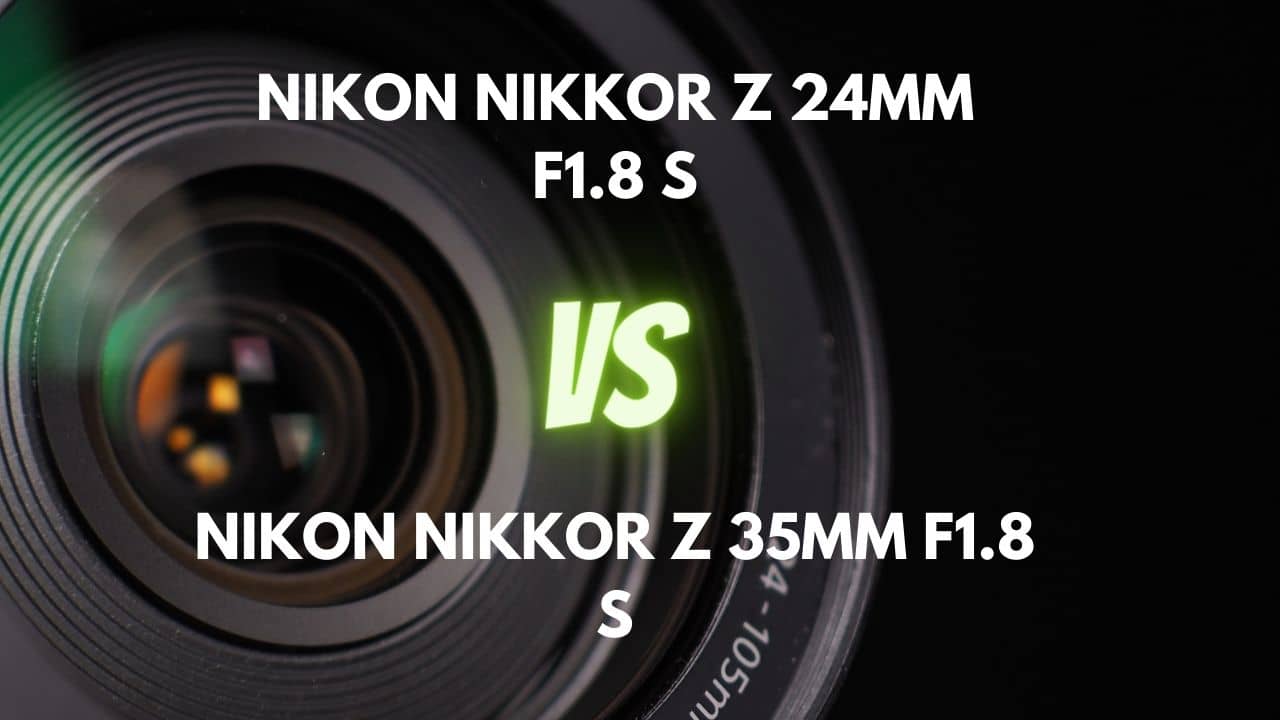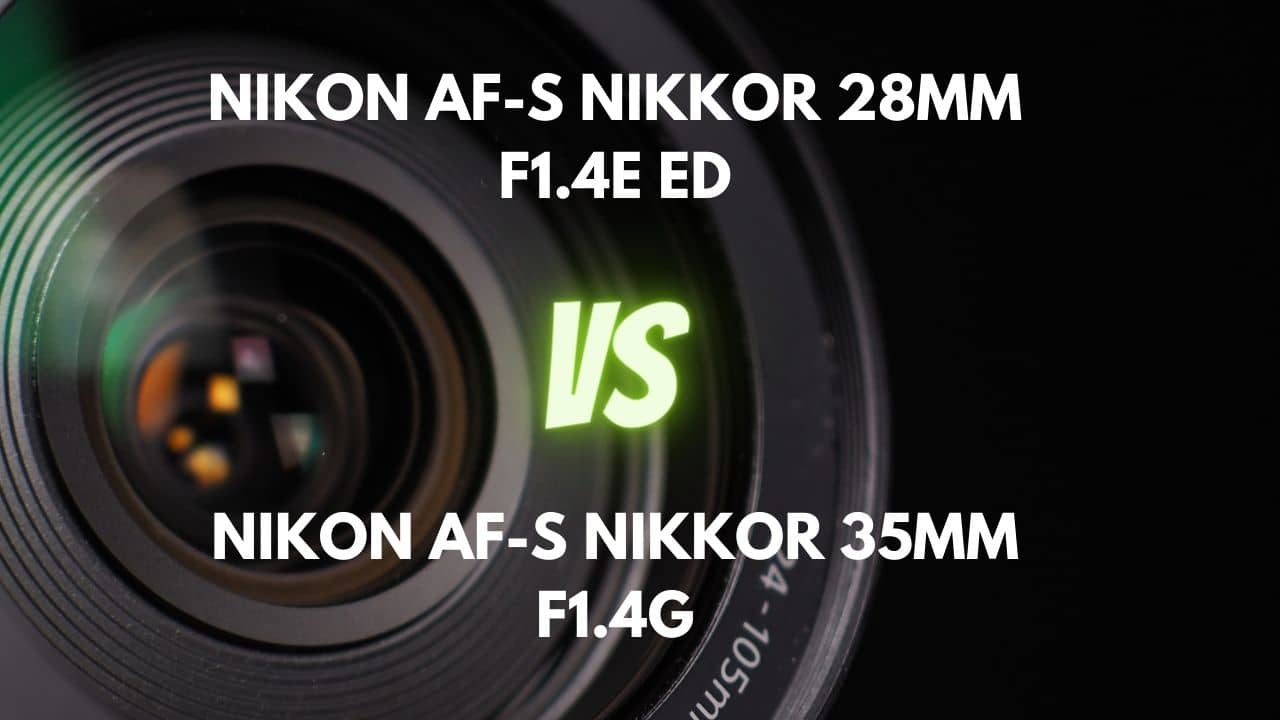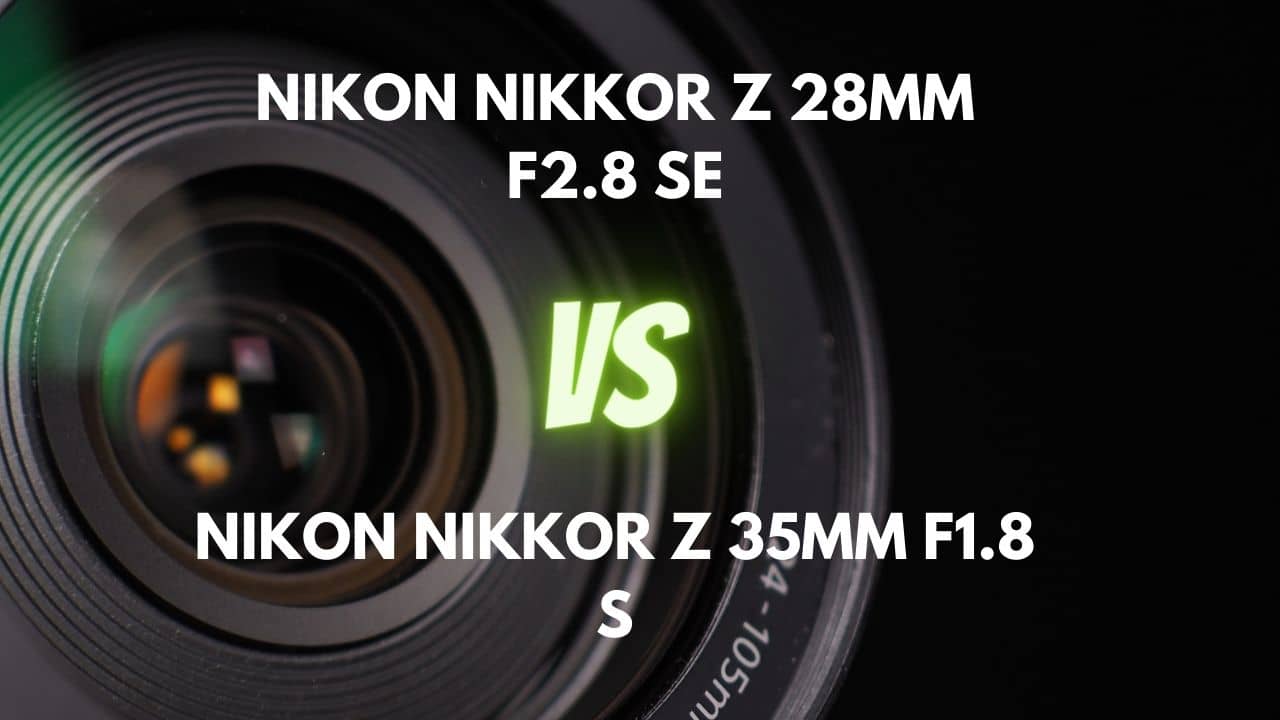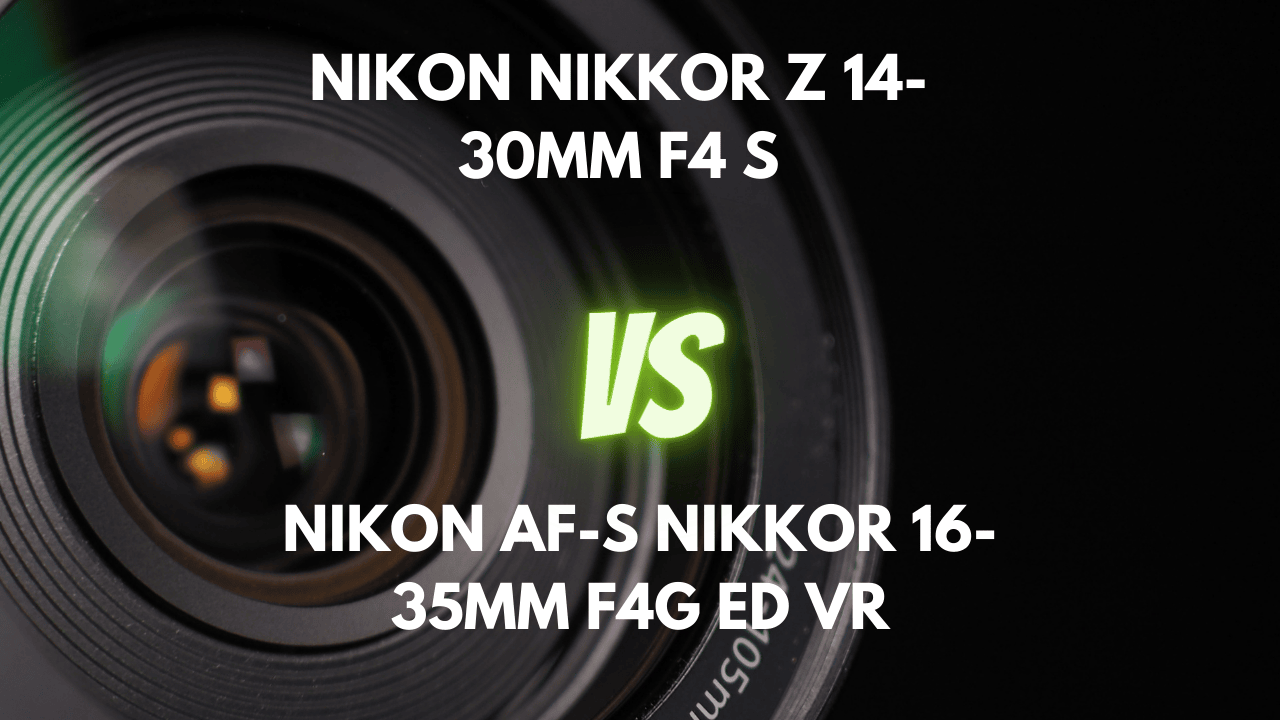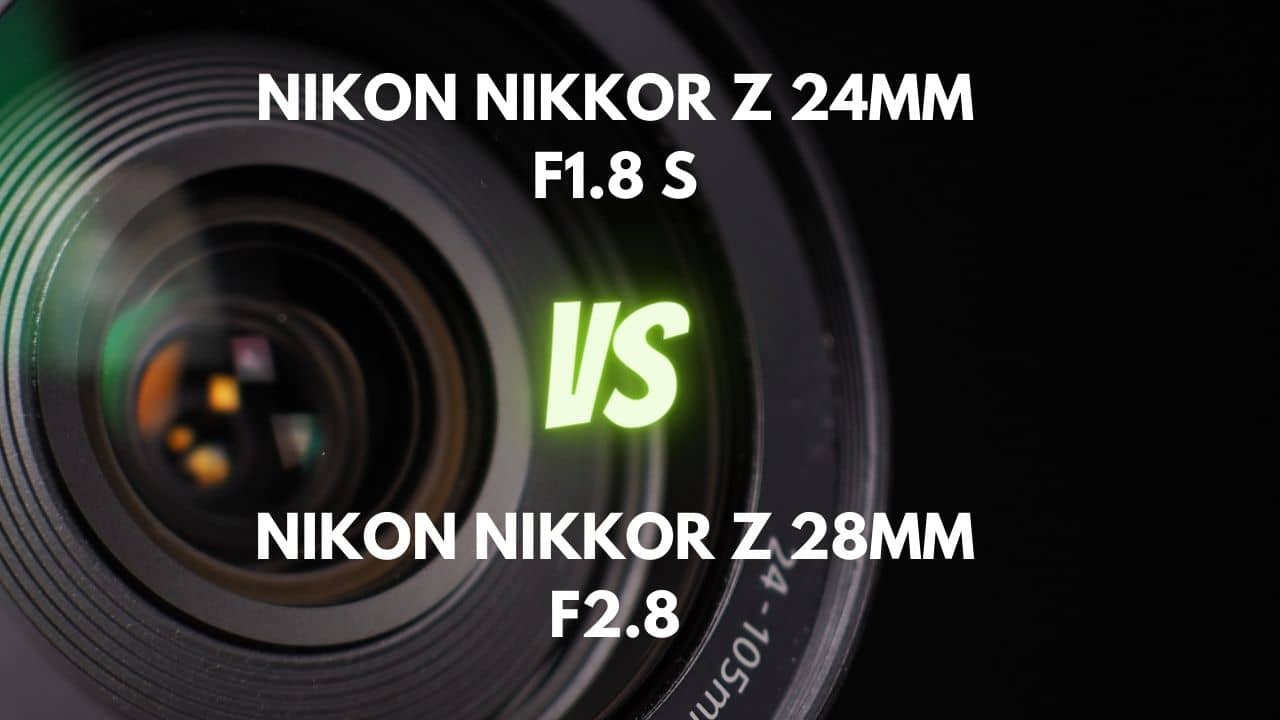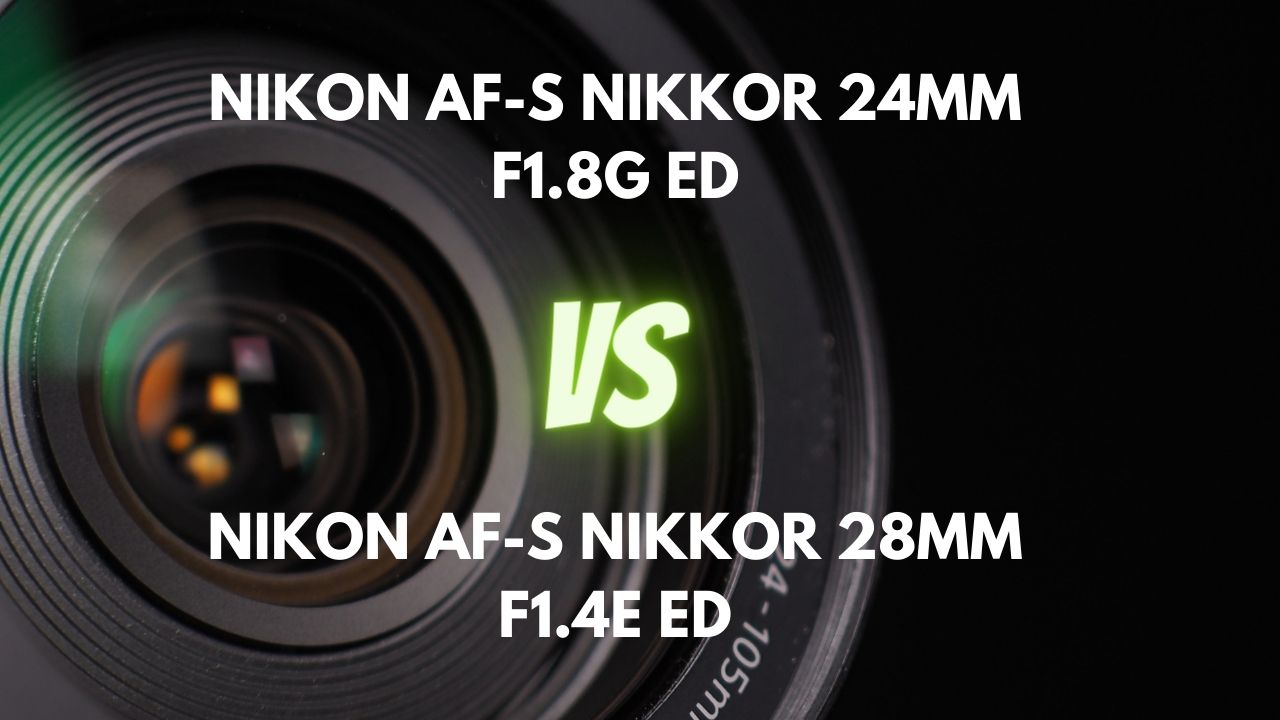Wide-angle lenses have revolutionized the way photographers capture the world, opening up a realm of creative possibilities.
From majestic landscapes to bustling cityscapes, and from intricate architectural details to immersive group shots, the broad field of view offered by wide-angle lenses allows for stunning visual storytelling.
In the realm of Nikon’s DX series, two lenses stand out as contenders for the top spot in wide-angle photography: the Nikon DX 10-24mm f/3.5-4.5 and the Nikon DX 12-24mm f/4. Both lenses promise to deliver exceptional performance, but how do they fare when compared side by side?
In this article, we will dive deep into the world of wide-angle lenses, comparing the functionality, image quality, durability, and more, as we help you decide which of these two Nikon DX lenses will best suit your creative vision and photographic needs.
So, grab your camera, and let’s embark on this journey to explore the world through a wider lens.
Overview
| Nikon AF-S DX NIKKOR 10-24mm F3.5-4.5G ED | Nikon AF-S DX NIKKOR 12-24mm F4G IF-ED | |
|---|---|---|
| Max Aperture | F3.5-4.5 | F4.0 |
| Aperture Type | Variable | Fixed |
| Focal Range (mm) | 10-24 | 12-24 |
| Max Format | APS-C / DX | APS-C / DX |
| Zoom Ratio (X) | 2.4 | 2 |
The Nikon AF-S DX NIKKOR 10-24mm F3.5-4.5G ED and the Nikon AF-S DX NIKKOR 12-24mm F4G IF-ED are both wide-angle zoom lenses designed for APS-C / DX format cameras. However, they have some differences that can impact your photography experience.
The Nikon DX 10-24mm f/3.5-4.5 has a variable aperture, which means its maximum aperture changes from f/3.5 at the widest focal length (10mm) to f/4.5 at the longest (24mm). This lens has a slightly wider focal range of 10-24mm, giving you more flexibility at the wider end. The zoom ratio is 2.4x, which allows for more versatility in framing.
The Nikon DX 12-24mm f/4, on the other hand, has a fixed aperture of f/4 throughout its focal range of 12-24mm. This means that the maximum aperture remains constant as you zoom in or out. The zoom ratio is 2x, which is slightly less versatile than the 10-24mm lens.
In terms of low light performance, the 10-24mm lens has a slightly wider maximum aperture at its widest focal length, which may be advantageous for some low light situations. However, the fixed aperture of the 12-24mm lens can provide more consistent performance across the zoom range, which is useful for maintaining a consistent exposure while zooming.
For depth of field, both lenses can achieve a relatively deep depth of field, suitable for landscape and architectural photography. However, the 10-24mm lens has a slightly wider aperture, which can provide a shallower depth of field if desired, particularly at wider focal lengths.
In terms of image quality, both lenses are capable of delivering excellent results. However, fixed aperture lenses like the 12-24mm f/4 generally have better overall image quality, including sharpness, contrast, and reduced chromatic aberration, compared to variable aperture lenses like the 10-24mm f/3.5-4.5.
In conclusion, the 10-24mm f/3.5-4.5 lens offers a wider focal range and slightly larger aperture, making it a more versatile and budget-friendly option. However, the 12-24mm f/4 lens provides more consistent performance with its fixed aperture and potentially better image quality. Your choice ultimately depends on your specific needs and preferences, but the Nikon DX 12-24mm f/4 lens may be the superior option for photographers prioritizing image quality and consistency across the zoom range.
Design and Ease of Use
| Nikon AF-S DX NIKKOR 10-24mm F3.5-4.5G ED | Nikon AF-S DX NIKKOR 12-24mm F4G IF-ED | |
|---|---|---|
| Diameter x Length (mm) | ⌀82.5×87mm | ⌀82.5×90mm |
| Weight (gr) | 460 | 485 |
| Filter Thread (mm) | 77 | 77 |
| Zoom Method | Rotary (internal) | Rotary (internal) |
| Distance Scale | Yes | Yes |
| DoF Scale | No | No |
| Hood Supplied | Yes | Yes |
| Hood Code | HB-23 | HB-23 |
The Nikon DX 10-24mm f/3.5-4.5 lens has dimensions of ⌀82.5×87mm and weighs 460 grams. Its relatively compact size and lighter weight make it more portable, easier to carry around, and potentially better balanced on your camera. This can be advantageous when shooting for extended periods or when you need to swap lenses quickly in fast-paced environments.
On the other hand, the Nikon DX 12-24mm f/4 lens has dimensions of ⌀82.5×90mm and weighs 485 grams. While it is slightly larger and heavier than the 10-24mm lens, the difference is not substantial. However, the extra weight may impact overall balance and handling during long shoots.
Both lenses feature an internal rotary zoom method, which means the lens does not change its physical size when zooming in or out. This design makes them more compact, easier to handle, and provides consistent balance throughout the zoom range. Additionally, internal zoom lenses are generally easier to weather-seal, offering better protection against dust and moisture.
In conclusion, the 10-24mm f/3.5-4.5 lens offers a more compact and lightweight design, which can be beneficial for photographers who prioritize portability and handling. However, the 12-24mm f/4 lens is only slightly larger and heavier, and both lenses share the same internal rotary zoom method.
Lens Mount and Barrel
The lens mount of the Nikon DX 10-24mm f/3.5-4.5 is made of dull-chromed brass and features a rubber seal for protection against dust and moisture. This added seal can be an advantage in challenging environments, ensuring the lens’s longevity. In addition, the lens has a bayonet mount mark and a mark on the case for quick installation of the included plastic HB-23 hood.
On the other hand, the Nikon DX 12-24mm f/4 lens mount is constructed of metal, an indicator of its quality and sturdiness. However, it lacks the rubber seal found on the 10-24mm lens, potentially making it more vulnerable to dust and moisture infiltration.
Regarding the lens barrel, the 10-24mm f/3.5-4.5 lens features a durable polycarbonate material with a matte black texture finish, which offers a good balance between weight and durability. The Nikon DX 12-24mm f/4 lens, on the other hand, is primarily constructed from high-quality plastics, making it lightweight and portable, but possibly less durable compared to the 10-24mm lens.
In conclusion, the 10-24mm f/3.5-4.5 lens mount and barrel offer superior protection against dust and moisture due to the rubber seal and a more durable polycarbonate construction. The 12-24mm f/4 lens, while featuring a sturdy metal lens mount, lacks the rubber seal, and its plastic barrel construction may not be as durable over time. Based on these factors, the 10-24mm f/3.5-4.5 lens has a more advantageous lens mount and barrel design for photographers who prioritize durability and protection in various environments.
Weather Sealing
The Nikon DX 10-24mm f/3.5-4.5 lens features a rubber seal at the lens mount, providing a degree of protection against dust and moisture. This added protection can be particularly useful for outdoor photography in challenging environments. However, it’s important to note that there are no internal seals at the rings or switches, which means that the lens is not fully weather-sealed.
On the other hand, the Nikon DX 12-24mm f/4 lens does not have any weather sealing or gasket at the lens mount, leaving it more vulnerable to dust, moisture, and light water splashes. Additionally, there are no internal seals at the rings, switches, or front of the barrel, making this lens less suitable for use in harsh conditions without extra precautions.
In conclusion, the 10-24mm f/3.5-4.5 lens offers superior weather sealing compared to the 12-24mm f/4 lens, thanks to the rubber seal at the lens mount. While it may not be fully weather-sealed, the additional protection can be beneficial for photographers who often shoot outdoors in various conditions. In contrast, the 12-24mm f/4 lens requires extra care and protection when used in challenging environments due to its lack of weather sealing.
Rings
The Nikon DX 10-24mm f/3.5-4.5 lens boasts a wide, ridged, rubberized zoom ring that rotates smoothly without zoom creep, providing excellent grip and control. The focus ring is narrower, lacks hard stops, and takes about 90° of rotation to run through the focusing range. With a 60° turning action for the zoom ring to cover the entire focal length range, this lens offers a tactile and ergonomic design. However, it lacks a depth-of-field scale and infrared marks, and there’s no extension lock switch on the zoom ring.
The Nikon DX 12-24mm f/4 lens also features 2 rings, with a broad, rubberized zoom ring that delivers a smooth rotation and a slim focus ring located closer to the mount. Both rings provide a solid and comfortable tactile experience, enhanced by good ergonomic beveling. This lens has a distance window with a hyper-focal scale but also lacks a depth-of-field indicator and infrared marks. The manual focusing distance is 90 degrees.
In conclusion, both lenses offer a comfortable and ergonomic experience when it comes to their rings. However, the 10-24mm f/3.5-4.5 lens stands out with its ridged, rubberized zoom ring and smoother rotation, providing more precision and control in handling. While the 12-24mm f/4 lens is also a solid choice, the tactile feedback and control offered by the 10-24mm f/3.5-4.5 lens give it a slight edge in terms of ring superiority.
Switches/Buttons
The Nikon DX 10-24mm f/3.5-4.5 lens is equipped with a focus switch labeled ‘M/A – M,’ enabling auto-focus with constant manual focus priority. This feature allows photographers to fine-tune focus even when the auto-focus mode is engaged. However, this lens does not possess any additional switches or buttons.
On the other hand, the Nikon DX 12-24mm f/4 lens also features a manual and automatic focus mode switch (M/A – M), providing similar functionality. Nevertheless, this lens lacks a switch for VR (vibration reduction), which can be a crucial feature for some photographers. The switches/buttons on this lens are minimalistic, offering basic functions without extra bells and whistles.
In conclusion, both lenses have a similar switch for auto-focus and manual focus modes, allowing for flexibility and control when capturing images, although neither lens boasts a wide array of switches/buttons.
Filter Thread
The Nikon DX 10-24mm f/3.5-4.5 lens boasts a 77mm filter thread made of plastic, which may not be ideal for those seeking a more durable option. However, its internal focusing system ensures the front element and filter thread remain stationary during focusing, making it easy to use polarizers and graduated neutral density filters. To avoid vignetting due to the lens’s wide angle, thin filters may be necessary.
In contrast, the Nikon DX 12-24mm f/4 lens also features a 77mm plastic filter ring. Its Internal Focusing (IF) system prevents the front element from rotating during focusing, allowing for seamless use of polarizers or petal-shaped hoods. The lens remains constant in length, with the front element moving inside the lens tube while zooming, making filter usage straightforward.
In conclusion, both lenses have 77mm plastic filter threads and share the advantage of non-rotating front elements during focusing. This makes using filters such as polarizers or graduated neutral density filters convenient with either lens.
Lens Hood
The Nikon DX 10-24mm f/3.5-4.5 and Nikon DX 12-24mm f/4 lenses both come with the same petal-shaped HB-23 plastic bayonet hood. This lens hood has a smooth matte interior finish, which helps to reduce light reflections and maintain image contrast. The bayonet mount design allows for quick and secure attachment, providing effective protection for the front lens element.
Additionally, the HB-23 lens hood can be mounted in reverse for transport without obstructing access to the zoom ring on both lenses. The lens hood does not cause vignetting when used within the 16-24mm range and can be paired with a polarizer since the front element does not rotate.
In conclusion, since both the Nikon DX 10-24mm f/3.5-4.5 and the Nikon DX 12-24mm f/4 lenses utilize the same HB-23 lens hood, they offer identical performance and functionality in terms of lens hood features.
Focusing and Optical Stabilization
| Nikon AF-S DX NIKKOR 10-24mm F3.5-4.5G ED | Nikon AF-S DX NIKKOR 12-24mm F4G IF-ED | |
|---|---|---|
| Autofocus | Yes | Yes |
| AF Motor | Ultrasonic | Ultrasonic |
| Rotating Front Element | Does not rotate on focusing | Does not rotate on focusing |
| Min Focus Distance | 0.24m | 0.3m |
| Max Magnification (X) | 0.2 | 0.12 |
| Full-Time Manual Focus | Yes | Yes |
| Focus Method | Internal | Internal |
Focusing Performance
The Nikon DX 10-24mm f/3.5-4.5 lens boasts fast and virtually silent autofocus, thanks to the SWM (Silent Wave Motor) technology. The generous close-focus point of 24cm allows for captivating foreground interest in landscape and architectural photography. The smooth manual focus action offers just the right amount of resistance for fine adjustments. Its internally focusing design ensures a constant lens length regardless of focus and zoom settings, and the front element does not rotate during focusing, making it suitable for use with polarizers or graduated neutral density filters.
On the other hand, the Nikon DX 12-24mm f/4 lens also offers fast and quiet autofocus performance with its SWM technology. The lens features manual focus override and a smooth manual focus action. Its internal focusing design ensures a constant lens length regardless of focus and zoom settings. The autofocus acquisition speed is snappy, and the lens is accurate when focusing. Even in low-light situations, the autofocus performance remains commendable.
In conclusion, both lenses offer excellent focusing performance, with fast and silent autofocus thanks to SWM technology and smooth manual focus action.
Optical Stabilization
Upon examining the Nikon DX 10-24mm f/3.5-4.5 and the Nikon DX 12-24mm f/4 lenses, it becomes apparent that neither lens offers optical stabilization. Although optical stabilization is generally more important for telephoto lenses, it can still provide benefits for wide-angle lenses in specific situations, such as handheld shooting in low-light conditions or video recording.
However, with wide-angle lenses, camera shake is typically less noticeable due to their shorter focal lengths and wider fields of view. Modern cameras often feature in-body image stabilization (IBIS), which can effectively work with wide-angle lenses to minimize camera shake even without built-in optical stabilization.
For landscape and interior photography, a tripod is often the most effective tool for achieving stability and sharpness, diminishing the importance of optical stabilization in wide-angle lenses. In situations requiring handheld shooting, a fast lens with a larger aperture may be more cost-effective for capturing sharp images than relying solely on optical stabilization.
In conclusion, as both lenses lack optical stabilization, there is no superior option in this regard. However, given that optical stabilization is less critical for wide-angle lenses, photographers can still achieve excellent results by using other stabilization methods, such as IBIS, tripods, or faster lenses.
Image Quality
| Nikon AF-S DX NIKKOR 10-24mm F3.5-4.5G ED | Nikon AF-S DX NIKKOR 12-24mm F4G IF-ED | |
|---|---|---|
| Special Elements | 2x ED glass elements and 3x aspherical lens elements | 2x ED glass elements and 3x aspherical lens elements |
| Diaphragm Blades | 7 | 7 |
Aberration
The Nikon DX 10-24mm f/3.5-4.5 lens exhibits chromatic aberration, which is most prominent at its widest focal length (10mm) and when used wide open at the longest focal length (24mm). However, recent Nikon camera bodies with smart JPEG processing engines can automatically detect and remove most chromatic aberrations. Furthermore, the aspherical element in this lens helps control lens flare and coma, which in turn reduce contrast. It’s worth noting that the choice of aperture doesn’t significantly influence the presence of chromatic aberration, except at 24mm.
On the other hand, the Nikon DX 12-24mm f/4 lens displays varying levels of chromatic aberration depending on the focal length and aperture used, with the most severe aberration occurring at 18mm and f/4, where it approaches one pixel-width. Nonetheless, stopping down the aperture generally reduces chromatic aberration to levels below noticeable thresholds.
In conclusion, both lenses exhibit chromatic aberration to varying degrees depending on the focal length and aperture settings. However, the 12-24mm f/4 appears to have a slightly better control of chromatic aberration, as stopping down the aperture helps reduce the effect more effectively.
Sharpness
The Nikon DX 10-24mm f/3.5-4.5 lens boasts generally excellent sharpness, particularly in the center of the frame. At maximum aperture, edge softness may be present, but this improves substantially when stopped down to around f/5.6. The lens maintains center sharpness at 15mm and 24mm, but edge quality noticeably drops off. Nevertheless, stopping down between f/5.6 and f/8 significantly enhances edge performance. This lens performs best at the telephoto range, with peak performance reached at f/5.6. It is important to note that sharpness may slightly vary between individual shots due to manufacturing tolerances.
In comparison, the Nikon DX 12-24mm f/4 lens provides remarkable sharpness across almost all focal lengths and apertures. At 12mm, there is minor softness at the farthest edge, but it’s rarely noticeable. Center sharpness is impressive, while edge and corner sharpness are somewhat worse at 12mm and f/4. Stopping down to f/8, however, significantly improves sharpness, even at the extreme corners. The lens also exhibits some field-curvature, especially at 12mm. Overall, this lens delivers sharp, contrasty images with color and contrast that match other Nikkor lenses well.
In conclusion, both lenses offer impressive sharpness, but the 12-24mm f/4 seems to have a slight advantage with its consistent sharpness across various focal lengths and apertures. Thus, if sharpness is your top priority, the 12-24mm f/4 lens may be the superior choice.
Bokeh Quality
The Nikon DX 10-24mm f/3.5-4.5 lens features a 7-segment diaphragm with rounded blades, which contributes to a pleasing bokeh quality. The out-of-focus areas in photographs taken with this lens are often described as smooth and creamy. However, since it’s an ultrawide-to-wide zoom lens, creating a substantial out-of-focus effect can be rare and requires conscious effort to zoom in, focus close, and use a wide aperture.
On the other hand, the Nikon DX 12-24mm f/4 lens exhibits a weak bokeh effect due to its large minimum focus distance (MDF), short focal length, and low aperture ratio. These factors result in a lack of bokeh aesthetics when using this lens.
While bokeh quality is not typically a primary concern for wide-angle lenses, which are designed to capture broader scenes and emphasize depth of field, there are instances where it can be relevant. In situations like environmental portraits or close-up photography, having pleasing bokeh can add a creative touch and help separate the subject from the background.
In conclusion, the 10-24mm f/3.5-4.5 lens offers better bokeh quality compared to the 12-24mm f/4 lens. However, it’s important to remember that bokeh is not typically the main focus for wide-angle lenses, so this difference may not be a significant deciding factor when choosing between these two lenses.
Flare/Ghosting
The Nikon DX 10-24mm f/3.5-4.5 lens has a tendency to exhibit flare when pointed towards strong light sources, such as during nighttime, sunrise, or sunset. However, it is reasonably free from ghosting and displays only slight flare or ghosting when pointed straight towards a strong light source, which is a commendable result for a wide-angle zoom lens. Although it may not be as resistant to flare as some other lenses, it still delivers good image quality and sharpness.
In contrast, the Nikon DX 12-24mm f/4 lens boasts excellent flare control and minimal ghosting, making it an ideal choice for photographers who want to avoid flare spoiling their shots. The lens performs well in handling ghosting and flare, even in strongly contrasted images with bright light sources in the frame.
Some users have reported small yellow dots near the edge of the photo closest to the light when a point light source is just outside the image, but shielding the light with your hand or using a shallow petal-shaped hood can help mitigate this issue. When using an uncoated non-Nikon brand filter, there may be minor ghosting near light sources. Generally, flare is not a significant issue, and this lens does a good job of suppressing it, especially in ultra-wide shots.
In conclusion, the 12-24mm f/4 lens has superior flare and ghosting control compared to the 10-24mm f/3.5-4.5 lens.
Vignetting
The Nikon DX 10-24mm f/3.5-4.5 lens exhibits noticeable corner shading or vignetting, particularly when used wide open at wider focal lengths. At 10mm, the corners can be two-thirds to three-quarters of a stop darker than the center, but this diminishes to around a third of a stop by f/11. Although the amount of vignetting is relatively low for a wide-angle zoom lens, it may still be visible in some situations. Thankfully, it can be easily corrected using lens-profile correction in software such as Lightroom or Photoshop.
On the other hand, the Nikon DX 12-24mm f/4 lens demonstrates some evidence of vignetting, especially when using thicker filters. Vignetting from a medium-thick filter vanishes in the 19-24mm range. In the 16-17mm range, vignetting is almost invisible, and from 18mm onwards, it is entirely absent.
In conclusion, the 12-24mm f/4 lens outperforms the 10-24mm f/3.5-4.5 lens when it comes to vignetting, particularly at shorter focal lengths.
Distortion
The Nikon DX 10-24mm f/3.5-4.5 lens exhibits noticeable barrel distortion at 10mm, which is typical for ultra wide-angle lenses. However, the Nikon D7100 in-camera correction significantly reduces this distortion in JPG files. The consistent distortion pattern across the frame makes it relatively easy to correct in post-processing. At 24mm, there is some pincushion distortion, but it’s relatively low and rarely an issue.
Distortion becomes a nonissue at focal lengths with a stopped-down aperture, such as f/8. While the lens has a noticeable amount of distortion, it’s usually not visible in most shots, except when straight lines are positioned along the edges.
In contrast, the Nikon DX 12-24mm f/4 lens has complex distortion most noticeable at 12mm, with visible barrel distortion of 4.39%. This makes it less suitable for images with straight lines near the edge of the frame. The non-uniform distortion is more severe as lines approach the corners. While partial correction is possible using advanced tools, it is recommended to use the lens between 15mm and 18mm when straight lines along the edges are crucial. At 24mm, distortion becomes pillow-shaped and is much lower, with only slight pincushion distortion of 0.242%. Despite the distortion issues, the lens is suitable for general-purpose and practical wide-angle zoom photography, but not recommended for architectural photography.
In conclusion, the 10-24mm f/3.5-4.5 lens offers better distortion performance than 12-24mm f/4 lens, especially at wider focal lengths.
Final Verdict
When making a decision between the Nikon DX 10-24mm f/3.5-4.5 and the Nikon DX 12-24mm f/4 lenses, several factors come into play. The 10-24mm f/3.5-4.5 lens is more versatile and budget-friendly due to its wider focal range, larger aperture, and lower price point. It also offers a more compact and lightweight design, superior weather sealing, and better handling with a ridged rubberized zoom ring. Additionally, the lens mount and barrel design offer better protection against dust and moisture, and it has superior distortion performance, especially at wider focal lengths.
On the other hand, the 12-24mm f/4 lens provides more consistent performance with a fixed aperture and potentially better image quality. While it is slightly larger and heavier, it also features a metal lens mount and has better chromatic aberration control, consistent sharpness, superior flare and ghosting control, and better vignetting performance. However, this lens is about $200 more expensive and lacks the weather sealing found in the 10-24mm f/3.5-4.5 lens.
In summary, if you prioritize functionality, portability, and budget, the 10-24mm f/3.5-4.5 lens would be a more suitable choice, providing a versatile and durable option for wide-angle photography. However, if image quality, consistency, and performance across the zoom range are more important to you, and you are willing to spend the extra $200, the 12-24mm f/4 lens may be the superior option.

